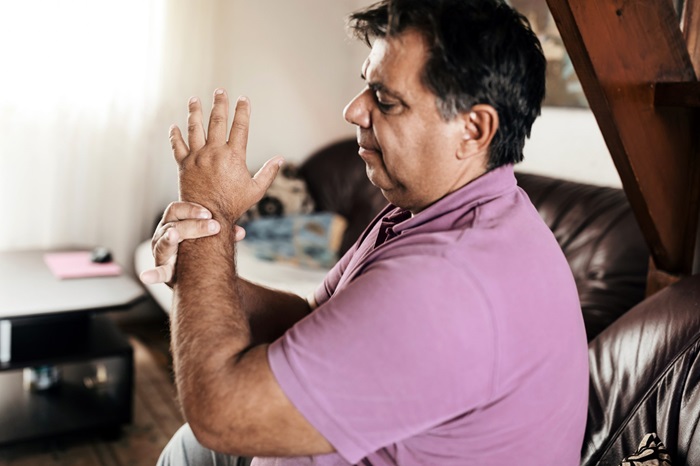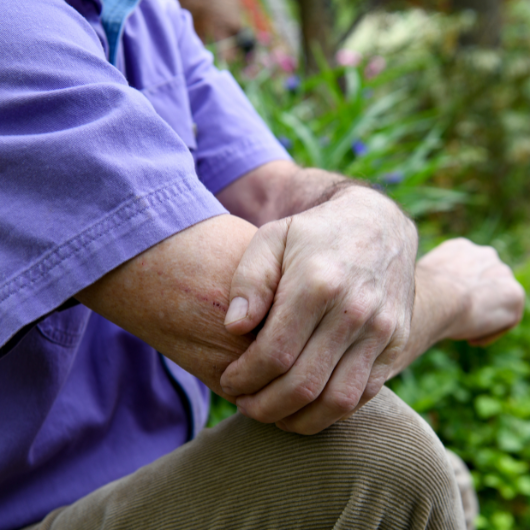Protect Yourself From Golfers’ Wrist

June 30, 2020
Many recreational golfers experience golfers’ wrist, a condition that commonly results in tendinitis of the extensor carpi ulnaris tendon in the wrist. In addition to overuse, things like poor form (such as over-cocking the wrist), poor swing technique or trauma to the area can also contribute to golfers’ wrist.
The condition is fairly common: A study from the British Journal of Sports Medicine shows between 13 and 20 percent of amateur golfers have experienced a wrist injury. “If you golf often and notice wrist pain, don’t panic,” says Ylenia Giuffrida, M.D., an orthopedic surgeon at Hackensack University Medical Center. “Many recreational golfers experience wrist pain at some point in time.”
How to Manage Golfers’ Wrist
Most mild cases of wrist tendinitis will resolve from rest and thermotherapy. If you’re experiencing golfers’ wrist, try these steps to relieve your pain:
- Rest your wrist. Take one or two weeks off from golfing and see if your pain subsides.
- Use hot and cold compresses if there is swelling and inflammation. Ice can stop swelling, while heat can relieve stiffness. Learn more about when to use ice vs. cold therapy.
- Purchase an over-the-counter wrist brace to wear during the day. This can help avoid excess wrist motion and stress on the joint.
- Try over-the-counter pain relief. Pain relievers like Tylenol, Motrin and Advil can help alleviate the symptoms of golfers’ wrist.
If your symptoms don’t resolve within a couple of weeks, consider visiting your doctor, who can order X-rays to make sure you don’t have any broken bones. They might also order a CT scan or MRI to make sure your pain isn’t being caused by another underlying problem.
“Wrist pain in golfers is almost always tendinitis,” says Gregory Fedorcik, M.D., FACS, a hand surgeon at Jersey Shore University Medical Center. “However, if your pain doesn’t seem to subside after rest, ice and other precautions, it could be a good idea to visit your doctor to rule out other conditions.”
If the tendinitis in your wrist is severe enough, your doctor might give you a steroid injection or recommend physical therapy. In very rare cases, your doctor might also recommend surgery to fix the tendinitis.
How to Be Proactive
Once you’re ready to resume golfing, consider these actions to prevent golfers’ wrist from returning:
- Take a lesson. Get in touch with a golfing coach who can help you optimize your swing technique to reduce the chances of future wrist injury.
- Make sure you have the right equipment. Clubs that are too short or too long can exacerbate the problem. A good rule of thumb is that clubs should be slightly longer than your palm.
- Warm up. Stretch before you play and take as many practice swings as you need in order to loosen up your joints.
- Get thicker grips. A too-tight grip can cause tendinitis. A wider, thicker grip means you won’t have to hold the golf club as tightly.
- Replace grips often. Strive to replace your club grips every 50 rounds of golf.
“The good news is that tendinitis of the wrist is simple to treat,” says Alexander Marcus, M.D., an orthopedic surgeon at Raritan Bay Medical Center. “With the right precautions, golfers can continue playing well into old age.”
The material provided through HealthU is intended to be used as general information only and should not replace the advice of your physician. Always consult your physician for individual care.
Find a doctor near me
Overcoming Quarantine Anxiety

If you are feeling anxious or burnt out from COVID-related stress and isolation, you aren’t alone.
Find a doctor near me

5 At-Home Remedies for Golfer’s Elbow
Find 5 at-home golfer's elbow remedies. Dr. Brown offers expert advice on ice, heat, stretching, and more for pain relief. Get relief today!

What Causes Pain in My Hips?
You don't have to live with hip pain. Learn about the most common causes, and your options for treating hip pain.

3 Ways to Fix Neck and Shoulder Pain
Dr. Delavaux explains three common work-related scenarios that can lead to neck and/or shoulder pain and provides helpful solutions. Learn more.

Tinnitus Patient Finally Finds Peace and Quiet
Find lasting tinnitus relief. Anna Callahan overcame constant ringing with innovative treatments at JFK Johnson Rehabilitation Institute. Learn how to manage your tinnitus today.
